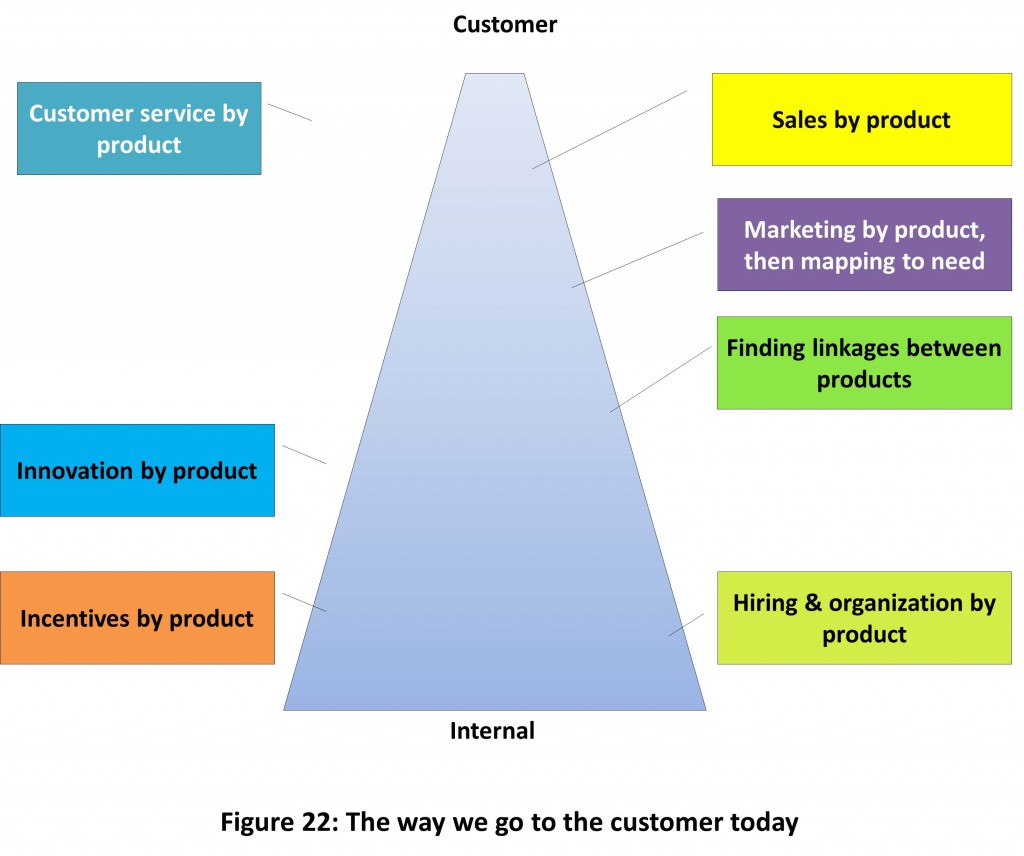An article on Forbes.com analyzed the 3 types of innovation outlined in a report by Booz & Company that companies follow. And it was clear that the “need seeker”, the company that tries to seek out and meet an emerging or latent need, wins hands down.
The three types of companies and their innovation models were defined as:
- Need seekers get a deep understanding of end user needs to inspire the development of new product ideas.
- Market readers excel at following the introduction of a popular new product trend with a product that can get to market fast and surf that wave while it’s still building.
- Tech drivers push the edge of technology innovation and try to find a viable business model that can turn it into revenues and profits.
The more I think about it, there seems to be a strong link between The Principle of Presenting, and successfully getting maximum returns on the R&D and innovation investments. The Principle of Presenting is about aligning customer interactions with our total value proposition. That means that different product lines must come together to create an irresistible value proposition for the customers.
Customers and consumers are looking for much more than information about our products. They are looking to define their need, compare options and determine what is right for them. In order to do that, they must analyze how a product or service will fit in with the other products and services they are considering. Finally they will investigate how the new products or services will work with what they already have. All along, the supporting factors like price, variants and shipment will be considered.
The Principle of Presenting starts by thinking about this customer thought process. We must start with the customer, not the product. Think about how our products are positioned to customers today.
The gaps are obvious. There is a big disconnect between what we are designing and communicating, and what the customers are capable of hearing or are being told. The customer experience should revolve around the purpose of the products portfolio, and not a product itself.
Now let’s consider the “need seeker” company. Such a company must iterate through the customer’s entire needs spectrum before it can determine where it wants to play. How are customers interacting with their products today? What activities do they perform in order to accomplish their objectives? What other products do they use to fill the gaps? What causes a break in experience? What information are they seeking that is not available easily? Can something be done to make their work or use easier?
The report outlined the example of a 12 inch saw by Stanley Black & Decker. A more pertinent and recent example I can think of is when their devices were internet enabled so they can communicate with the manufacturer. That capability connected the company with users in real time, and thus breaking the barrier between just selling a product, and actually helping a customer achieve their goals. Apple, is another example where their phone, App Store, payments, iCloud, FaceTime and other such interlinked capabilities work together to yield maximum benefits to the customers. Amazon is similar. Think of their competitors and you probably won’t yet see such coherent creation of an ecosystem through their product portfolios.
The innovation problem seems insurmountable if examined through the traditional lens that looks inside out at the problem – what services and products do we provide today, and how should we connect them or make them universal? That’s a complicated question to answer. It’s easier to comprehend if we reverse the lens – what do our customers need and how do we cater to that? What’s worse is that in a firm focused on products and geographies, we may not even be asking this question.
The digital economy has bridged many isolated communication channels. Just like in the case of The Principle of External Reinforcement, if our products are not presented so they help each other with a singular focus on customer needs, our engagement with customers will be subpar.
Based on The Principle of Presenting from my book “Dancing The Digital Tune: The 5 Principles of Competing in a Digital World”
An alternate and more comprehensive version is on my LinkedIn profile at: https://www.linkedin.com/pulse/connect-needs-deliver-innovation-manish-grover

